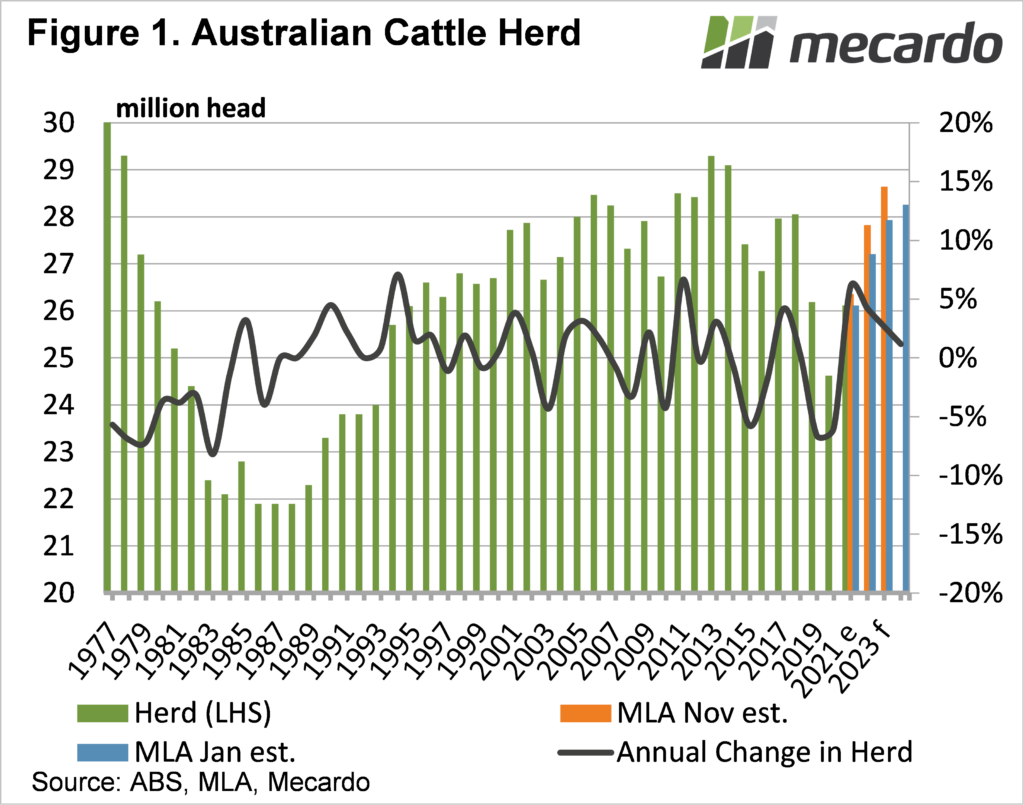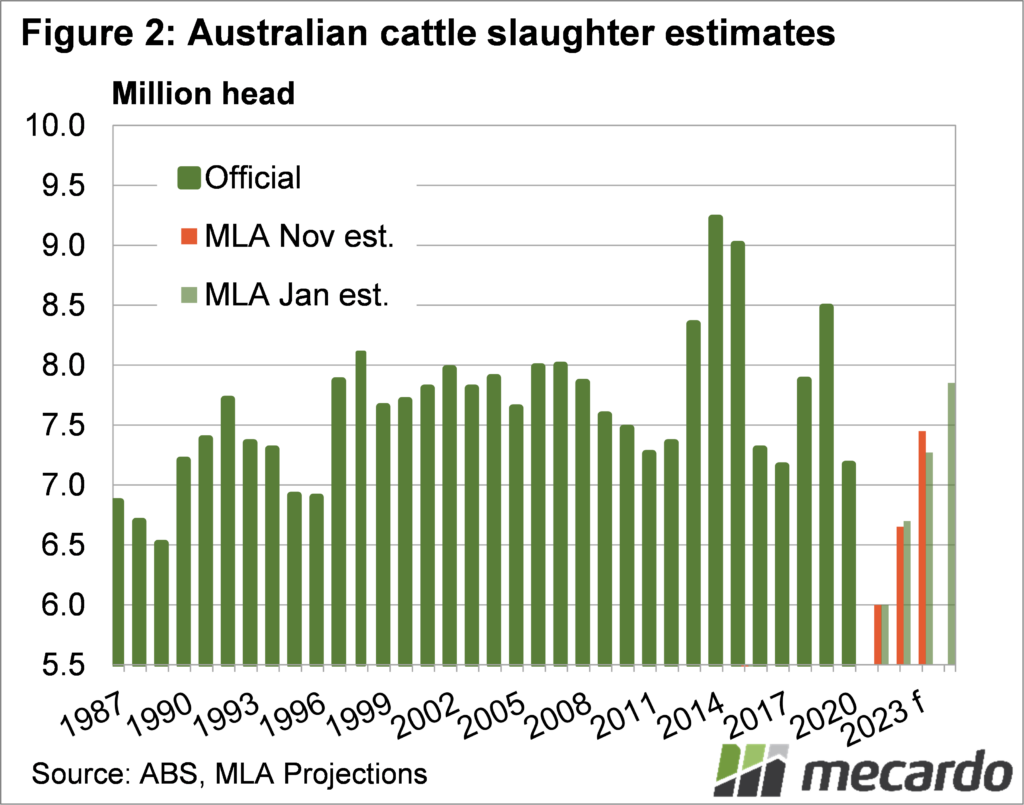January is when Meat & Livestock Australia (MLA) update their projections, and there have been a few interesting changes made, especially on the supply front. Herd growth is expected, but we might have already seen the peak in the rate.
MLA’s cattle industry projections are a great guide as to where the cattle herd and supplies are headed. While they are always being revised, the size of the cattle herd and slaughter projections give us an idea of how supply, and therefore price, might perform in coming years.
The official herd numbers for June 30 2021 from the Australian Bureau of Statistics (ABS) are still a couple of months away, and MLA altered their estimate slightly, stripping a further 1% from the herd. At 26.11 million head, the herd is expected to have grown 6% from 2020.
Figure 1 shows that the strong growth in 2020-21 has followed two consecutive years of 6% declines. The herd is now only back to the 2019 level, but projected growth of 4% this year is expected to see the herd back above 27 million head.
MLA have decreased herd projections for 2022 and 2023 by 2.2 and 2.5% respectively. The reason being is continued weaker than average seasons in major cattle areas in Queensland. MLA are calling it a two paced rebuild, with southern areas remaining growth limited, with much of the remaining growth having to come from the north.
MLA lifted their slaughter estimate for 2022, but only by 0.8%, which is contributing to the slower herd rebuild. However, with the slower, longer, rebuild, MLA’s projection for cattle slaughter for 2023 was decreased by 2.4%. Figure 2 shows that slaughter in 2023 is expected to be 21% higher than 2021, but it is still 21% below the peak of 2014.
MLA have added 2024 to their projections, and are expecting slaughter to return to the 10-year average by then. The Australian cattle herd has never seen three consecutive years of growth of the size being forecast, but it has also never seen such a decline, or the extreme prices encouraging the rebuild.
What does it mean?
Increasing cattle supply should have a negative impact on prices, but we haven’t seen it thus far in 2022. We know that export markets drive our markets, and as domestic cattle supply increases, our prices will fall back towards export parity. The timing of the increased supply will govern when prices ease, but looking at the projections it might be 2023 before a large correction appears. We don’t know what export markets will be doing by then.
Have any questions or comments?
Key Points
- MLA’s herd projections show a slight slowing in the herd rebuild.
- With the herd growing more slowly, cattle slaughter is also projected lower from 2023.
- Cattle prices will have to fall back, but it’s not going to be a heavy correction this year.
Click on figure to expand
Click on figure to expand
Data sources: MLA, ABS, Mecardo



